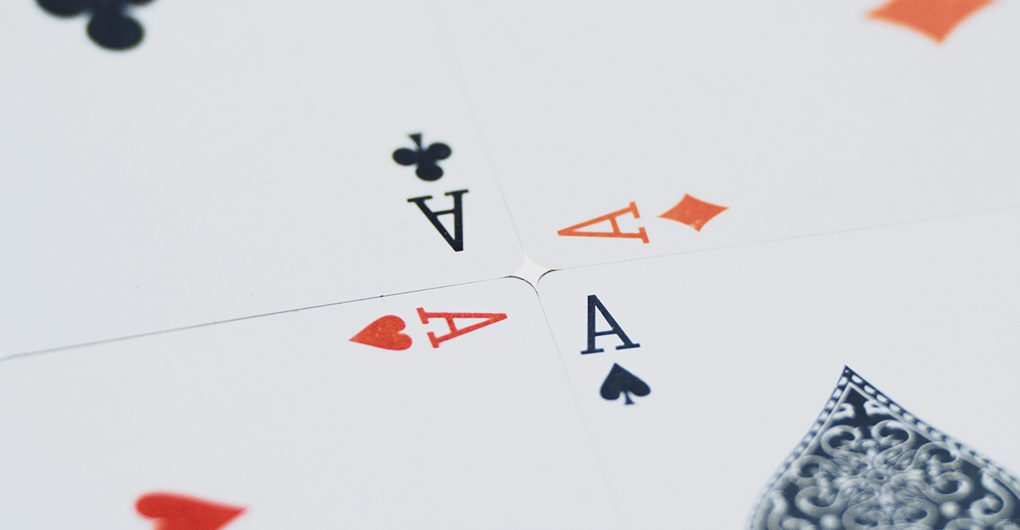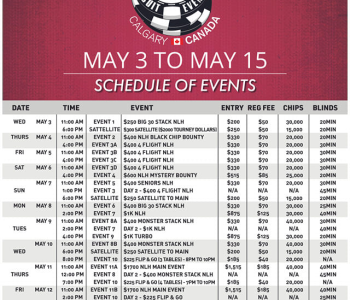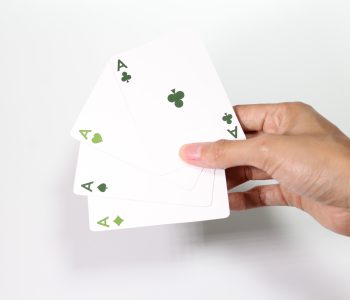
“Fit or Fold” As a Strategic Approach in Poker
You can most certainly play poker with a straightforward approach. Play the Top Ten hands, pocket Aces through tens with Big Slick and Big Chick tossed in with the occasional foray with an A-J- or A-10, but eventually that will become recognizable, especially by your opposition. Thus, when you come in for your raises, the entirety of the table will run the other direction and you’ll get nothing out of the effort.
The next step in your poker evolution is to start incorporating some trickery into your game. When you play certain hands like baby pairs or suited connectors, you’re going to face a change. With these hands, should you miss, you’re probably not going to win the hand (pocket Aces or Kings can sometimes survive on their own). Thus, you have to look at the “fit or fold” approach, which can be a very profitable and strategic approach to poker.
If You Fit, You Sit
First is the easy part of the equation. If you hit your hand – say catch a trey while holding pocket threes or hit an open-ended straight draw with your 8♠ 7♠ – then you’re going to “sit” in the hand. You should be able to call a bet, if there is one ahead of you, or you can open up the betting yourself should you have the action. Because you’ve hit what you were looking for, you’re ready to go to battle with what you’ve got.
The problematic side of this is if an opponent continues to play against you in the hand. Let’s say the hand is K-3-8 with your pocket threes and, after it is checked to you, you put a bet on the table. Now your opponent wakes up with a check-raise. Did you get caught in your own trap? Did your opposition mine his own set? This is where you have to have some information on your opponent, to see if such a play is in their toolbox.
If your opponent calls and comes along, this isn’t the worst thing for you. Especially with our example hand, the potential hand ranges aren’t going to beat you (about the only one that is problematic would be a K-8, in our example, as another King gives you a lesser boat, but a player on A-K or 9-8 isn’t going to catch up with you). But you do have to keep your eyes open to any other potential dangers that might present themselves.
If It Doesn’t Fit, You’ve Got to Quit
In the event that you don’t hit your hand, then your future is pretty much set. Let’s stay with our pocket threes example, except let’s change the flop this time to a K-4-8. Every one of the cards on the flop is bigger than your treys, meaning that even someone with a measly 5-4 has you beat. In this position, you’re probably not going to be betting a great deal of the time and, should someone bet out, it is possible that you’ve got to quit the hand.
But what if you were to “float?” Floating is an option that some players might take on a hand like this, thinking that their opponent was on paint (say a K-Q) or maybe a 9-8 (among other ideas, such as your opponent having their own pocket pair). But you’ve got to be convinced that your opponent would be capable of a play like this. If you do choose to float the flop, then you’ve got the same potential outcome facing you on the turn – do you fit? If not, you’ve got to quit.
Summary
Using a “fit or fold” approach is a good way to mix up your play and be active at the table, sometimes for a small expenditure, and it can be good to get away from an ABC game and make some money. But you’ve got to have the discipline to be able to get away from your hand – “fold” – if you don’t fit into the equation. If you haven’t this discipline, either after the flop or even after the turn, then you will bleed through chips and turn profitable sessions into unprofitable ones.
Source: pokernewsdaily.com









